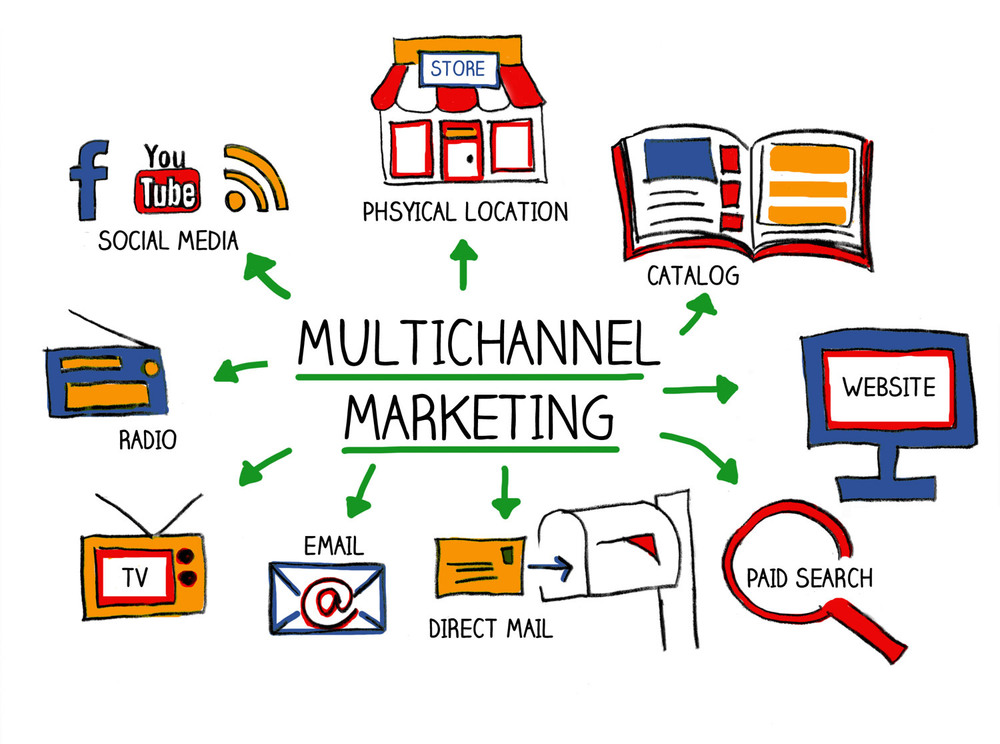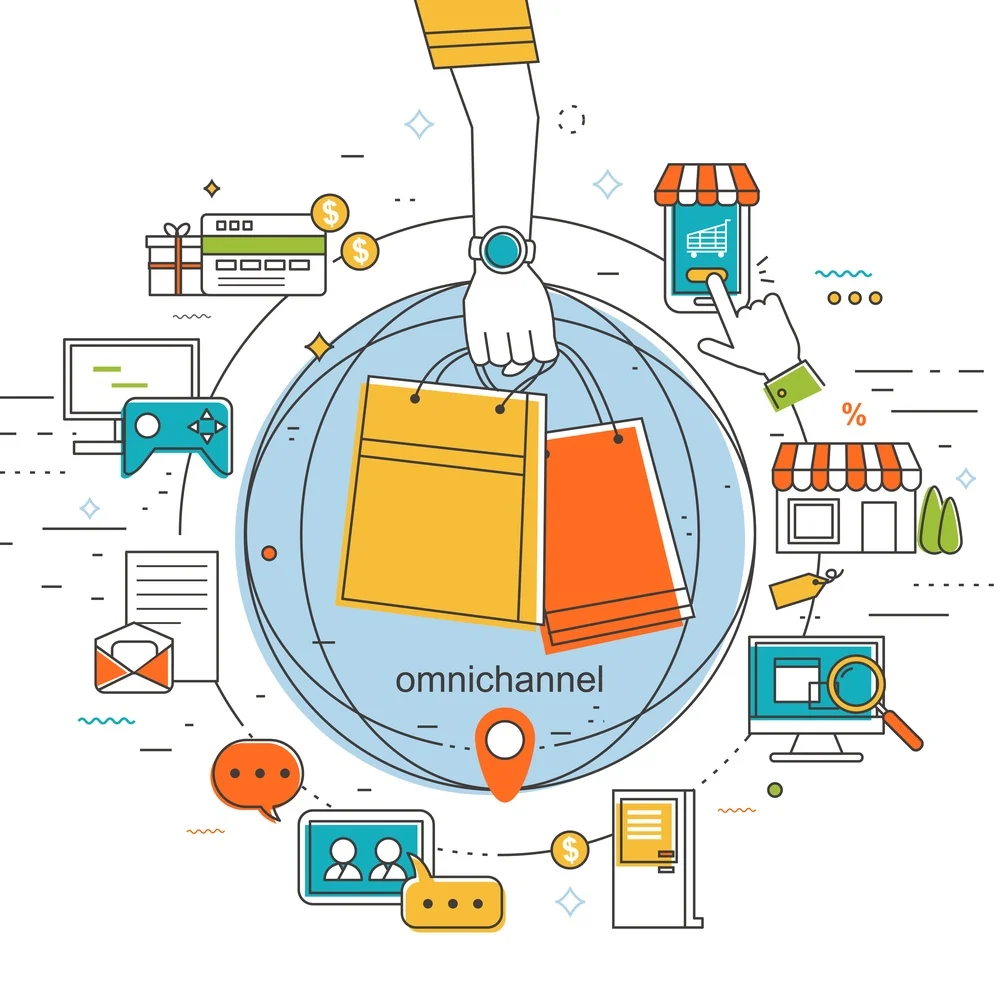There’s not one marketing consultation these days where omnichannel vs multichannel doesn’t pop up at least once. These two buzzwords have become the go-to framework for many modern marketers. But what do they actually mean? How do you know which one is right for your business?
At their core, omnichannel and multichannel are both strategies for delivering a cohesive customer experience. They differ in their focus though. That’s what we are going to explain today.
What does omnichannel mean?
Let’s start with the basics. A channel in marketing stands for a means using which you communicate with your customers and your target audience. To reach out to the target audience, you will rely on a marketing channel. For instance, email, social media or websites.
To reach out to an existing customer, you will rely on a communication channel. For instance, a phone call or a text message, or a social media message.

Omnichannel is an approach where a business uses more than one channel to connect with its customers and target audience. But it’s all interlinked. The idea is to create a seamless experience. This allows a customer to use any channel that’s best suited for them without a break in the communication.
For example, a customer can reach out to you on a messaging app like Whatsapp. This conversation can be escalated to a video call seamlessly. That’s the perfect example of omnichannel. Let’s say a customer lands on your website but abandons the shopping cart. An omnichannel strategy allows them to continue this on the mobile app. They just pick up where they left from.
What does multichannel mean?
Multichannel means using more than one channel to reach out to your customers. Wait, doesn’t that sound like omnichannel? There’s a difference. In a multichannel strategy, the marketing and communication channels are not integrated.
For instance, a print ad that you use to promote your brand is not integrated with your website. Both of these are separate and mutually exclusive of one another. Both may serve the same purpose, mind you. But they’re not creating a cohesive experience.
Omnichannel vs. multichannel – The primary differences
They do sound similar. We agree. But there are some fundamental differences between the two. Being aware of these differences will allow you to make a more informed decision for your business.
Omnichannel is all about customer experience, while multichannel is about engagement
The purpose of an omnichannel marketing strategy is to enhance customer experience. You can use multiple channels for your marketing goals. But the customer should be able to seamlessly interact with the business regardless of what channel they use.
With multichannel, it’s all about engagement and reach. Use all marketing channels at your disposal. But spread the message as far as you can. There’s no need to integrate these channels either. Instead, you should focus on making each channel engaging. There’s no limit to the number of channels you can use either. If your target audience prefers a certain channel, go ahead and add it to your plans.
Omnichannel vs multichannel – More channels vs. fewer interlinked ones
Multichannel marketing has one goal. To increase the reach of the marketing message. To this end, the more channels you use, the better it is. For an e-commerce business, this could mean using a website, social media, and paid advertising. As long as you can reach the customer through any of these channels, it’s all good.

On the other hand, omnichannel is about creating a cohesive customer experience. You may need to use a limited number of channels for the experience to be cohesive. Let’s take an e-commerce store as an example. Ecommerce stores can use an app, a website, social media and messaging apps. All four channels are reasonably easy to integrate.
But the moment you add channels, the more complicated it gets. For example, add an offline store to it. Suddenly, it becomes more challenging. Let’s say you have a customer who checked out a product in a brick and mortar store. Can you recommend the same product to the customer on the mobile app? That’s what omnichannel can do. Businesses should focus on integration. Not on the number of channels.
Consistency
Omnichannel marketing is all about consistency. You need to maintain uniformity across all channels. The customer should be able to seamlessly interact with your business, no matter which channel they use. That’s the key difference in omnichannel vs multichannel.
A customer contacts your support team on the phone. A day later, they use email. But their customer interaction is auto-updated. They do not have to explain the whole situation again. This saves time and creates a better customer experience.
Multichannel marketing on the other hand is more about variety. You can use many different types of marketing channels. But since these channels are not connected, there may be a lack of consistency. Let’s take the same example. When the customer reaches out on email the next day, they interact with a different agent.
Since it’s not an interconnected marketing strategy, the customer has to start from scratch. This creates a negative experience and could lead to the customer abandoning your brand. Rockstar Marketing’s Marketing Team can help you design a consistent marketing message.
Omnichannel vs Multichannel – Some examples to help you understand better
In case you’re confused, here are some examples of how omnichannel vs multichannel marketing compare to one another.
Omnichannel – A brick & mortar store that displays updated prices from its online catalogue
Customers who walk into brick and mortar stores often compare prices with the ones online. This is where omnichannel marketing comes into play. A store can use a kiosk to display its online prices. This saves the customer some time. Also, it helps create a seamless experience.

Similarly, stores can use kiosks to display inventory that’s only available online. Furniture pieces for example are sometimes too bulky to display. Great place to use an omnichannel strategy.
Similarly, brick and mortar stores can show social proof. product reviews, testimonials and video testimonials, which can all help increase conversion rates.
Multichannel – A business that sells on Amazon, distributes to retailers and uses paid ads on PPC platforms
A company focused purely on sales can use multiple channels. Rather than being hung up over omnichannel vs multichannel. They can sell directly on Amazon. At the same time, they can distribute their product to retailers who resell it.
Oh, they can also use paid ads to promote their website. We use Facebook ads for our clients who use a multichannel approach to stellar results. This allows them to reach the maximum number of people. The downside is that this can be difficult to manage. It often leads to inconsistency and a lack of customer experience.
Omnichannel – Buy online, pick up in store
A common omnichannel approach these days is to allow customers to buy online and pick up the product in-store. This allows them to avoid shipping charges.
More importantly, it allows the customer to interact with a live person. They can ask questions and get immediate help. This face-to-face interaction helps build trust and loyalty.
Omnichannel vs multichannel – When to choose which one?
In current times, omnichannel marketing works way better than a multichannel approach. The biggest advantage of omnichannel marketing is building brand loyalty. That’s the best way to ensure customer retention and stand out from the competition.
That said, an omnichannel strategy is not for everyone. It requires huge investments. You need a massive team for continual support. You also need to invest in systems that can seamlessly integrate different marketing channels.
Like we said, the more channels you add, the more complex it gets. If you cannot afford this kind of investment, multichannel may be your best option. The upside is that you don’t have to spend as much. You can use different platforms to reach out to more people. It allows you to streamline your budget and focus on the channels that provide the best ROI.
Once you have a better understanding of your customer base, you can experiment with different marketing channels. You can start off by using multichannel marketing and see how it works for your brand.
When it comes to choosing which one to use, ask yourself these questions:
- What is the goal of my marketing campaign?
- Who is my target audience?
- Which channels are my customers using?
- How can I create a seamless experience for my customers?
- Do I have the bandwidth required to create seamless experiences?
Based on your answers, you can then decide which strategy to use.
To wrap it up
An omnichannel strategy aligns with all the marketing and communication channels you use. This allows a business to create a seamless experience for the customer. It is definitely more expensive but may be well worth the investment.
A multichannel approach requires less investment. But it’s not without its own set of challenges. Each channel should function independently and provide a decent ROI.



0 Comments